#coin empire
Text
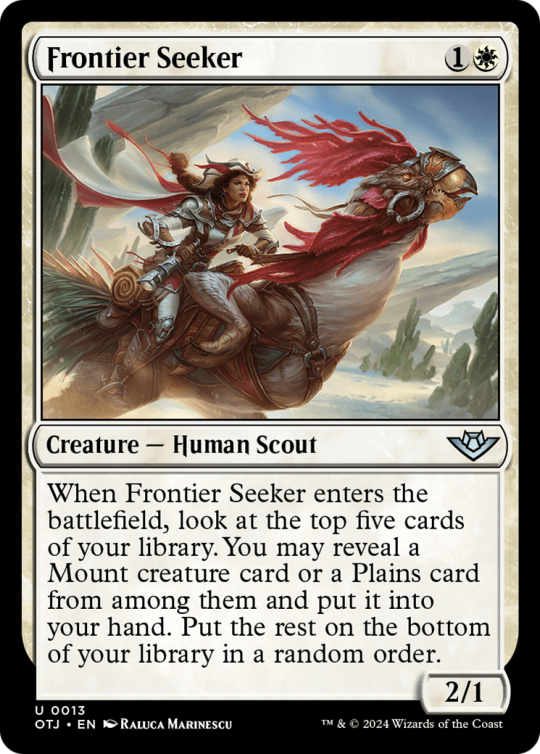
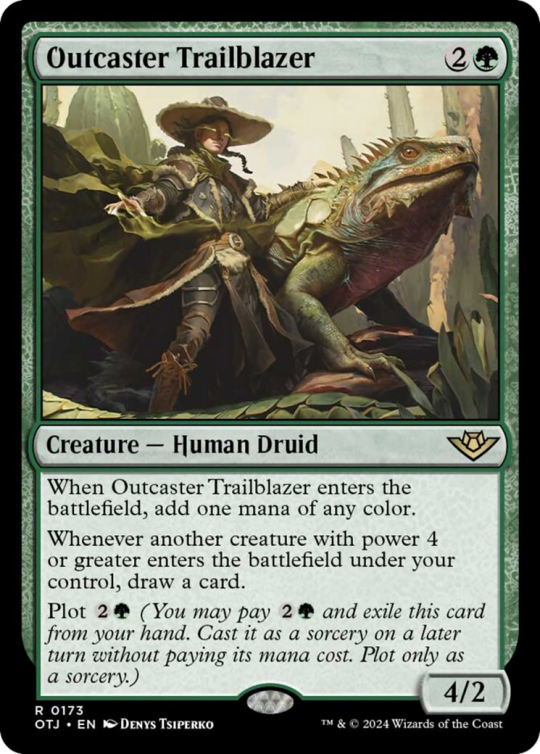
I can see Thunder Junction as a former world in the Coin Empire. All the flora and fauna are giant-sized. People are literally riding chickens and iguanas and other giant animals. But the place is basically a desert, right? Obviously the Fomori used up all the natural resources. I still don't know why they left a child, also described as an infant, locked inside a vault in the sky. One brief paragraph just wasn't enough. I guess it'll be a few more sets before we learn anymore about it.
#mtg#magic the gathering#thunder junction#coin empire#giant baby#fantasy card game#wotc#wizards of the coast
10 notes
·
View notes
Photo

Where Roman coins have been found
4K notes
·
View notes
Text
lestappen parallels feat. skyfall
the predestined and the inevitable
#this is my roman empire#the visuals#*chefs kiss* cinema#lestappen#charles leclerc#max verstappen#two sides of the same coin#f1#formula 1#cota gp 2022#austin gp 2022#brazil gp 2023#brazilian gp 2023#skyfall#someone mentioned this on tiktok and its been living in my head rent free since. rude.
836 notes
·
View notes
Text

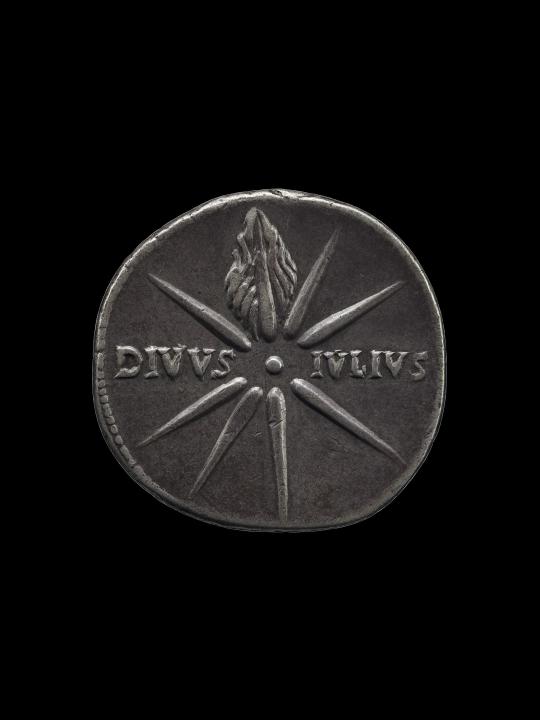
Denarius with head of Augustus wearing oak wreath (obverse) and comet with eight rays and inscription Divus Julius (reverse)
Roman (possibly minted at Caesaraugusta, modern Zaragoza in Spain), Imperial Period, 19-18 B.C.
silver
British Museum
#I love the coins of Augustus with representations of Caesar's Comet#I linked to the Wikipedia page if you want more info#denarius#Augustus#Julius Caesar#Caesar#Caesar's Comet#Divus Julius#Roman Empire#Augustan Period#Imperial Period#silver#coin#numismatics#British Museum
194 notes
·
View notes
Text
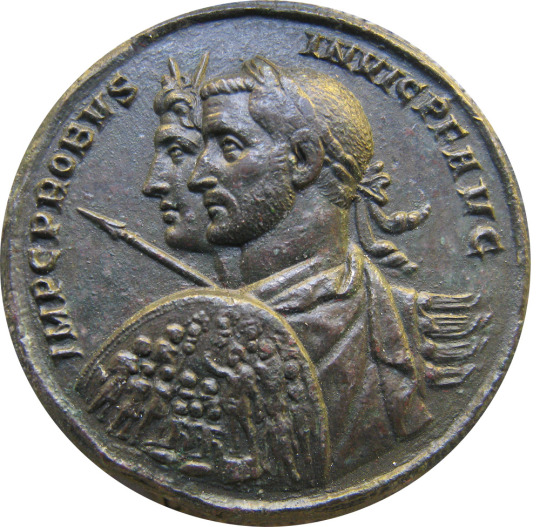
Coin minted ca. 280 CE by the Roman emperor Marcus Aurelius Probus (r. 276-282). Probus is shown in the company of Sol Invictus ("Unconquered Sun"), a late form of the solar deity whose worship had been promoted by Probus' predecessor Aurelian. The birthday of Sol Invictus (Dies Natalis Solis Invicti) was traditionally celebrated on Dec. 25. On this coin, Probus, who was constantly on campaign during his brief reign, is shown prepared for battle with shield and spear, alongside Sol Invictus, who wears his characteristic radiant crown. Now in the National Museum of Denmark, Copenhagen. Photo credit: ChrisO/Wikimedia Commons.
#classics#tagamemnon#Ancient Rome#Roman Empire#ancient history#Roman history#Probus#M. Aurelius Probus#Roman religion#Ancient Roman religion#religio Romana#Sol Invictus#art#art history#ancient art#Roman art#Ancient Roman art#Roman Imperial art#coins#ancient coins#Roman coins#Ancient Roman coins#numismatics#ancient numismatics#Roman numismatics#National Museum of Denmark
310 notes
·
View notes
Text
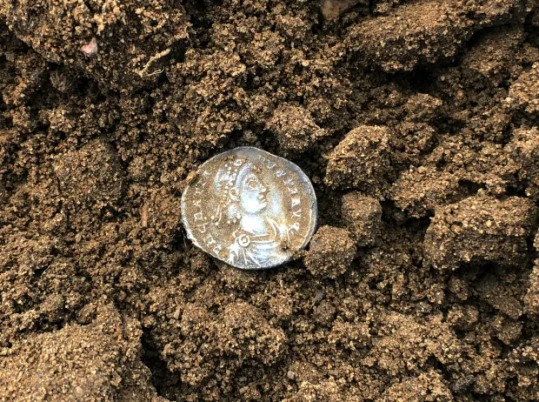
Roman Coin Hoard Found in England Sells at Auction
A hoard of Roman coins discovered by a metal detectorist scouring farmland has fetched more than £15,000 after going under the hammer.
More than 430 coins were found buried in the village of Colkirk, near Fakenham, Norfolk.
A collection of 73 pieces, including an extremely rare coin featuring a phoenix on a globe, was auctioned in London.
The anonymous finder had shown "perseverance", said coin specialist Nigel Mills, from Noonans auctioneers.
"Some of the people I've spoken to recently, who have found some amazing finds, are spending a lot of time detecting - hours and hours - and they don't give up," he said.

"They keep going and that's the secret in so many things - don't give up, keep looking."
The Colkirk hoard, believed to date back to the early 5th Century, was spread out across a third of an acre on arable farmland, although the majority of finds were discovered in a 1.5m (59in) radius.
It was a lucky find for the detectorist, who had no idea the soil held such treasures.
They were out searching a field in January 2020 when they spotted a silver coin, which they recognised as a siliqua - a small, thin Roman coin.
It sparked a haul of 40 coins that day, with a further 40 found on the following one.
Covid lockdowns meant searches became more sporadic, but each discovery was logged with a portable GPS unit to accurately pinpoint the hoard's distribution.
In all, 315 coins were found in 2020, 114 in 2021 and three in 2022.
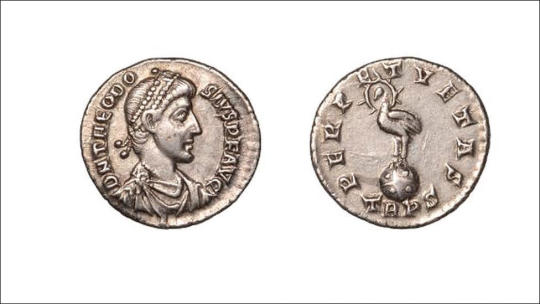
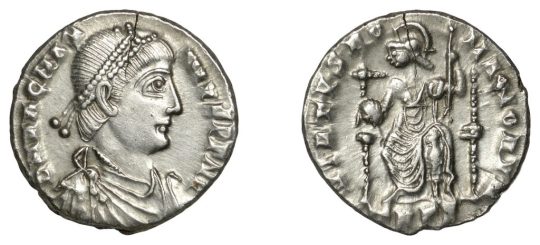
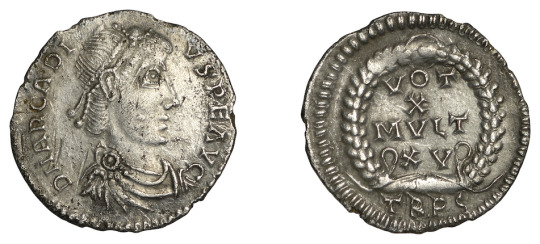
Some of the coins had been damaged, while others were fragmented due to farming processes.
A commemorative Third Miliarensis coin issued by Emperor Theodosius, decorated with a phoenix on one side, was only the fifth one of its type known to exist, with all the others in museums.
It reached £3,400 at the sale in Mayfair.
Mr Mills said: "The hoard had [been] spread out over a third of an acre through disturbance by ploughing and has been recorded under the Treasure Act.
"The hoard is likely to have been deposited at the beginning of the 5th Century AD, with the latest coin of Honorius dating no later than 402 AD.
"Other Roman treasure finds of gold and silver also from East Anglia, such as the Hoxne and Thetford hoards, reflect the wealth and importance of the area."

#Roman Coin Hoard Found in England Sells at Auction#village of Colkirk#metal detecting#coins#collectable coins#roman coins#ancient coins#ancient artifacts#archeology#archeolgst#history#history news#ancient history#ancient culture#ancient civilizations#roman history#roman empire#roman art
196 notes
·
View notes
Text
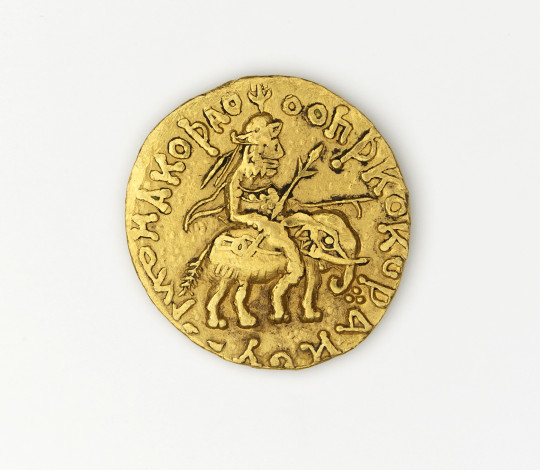
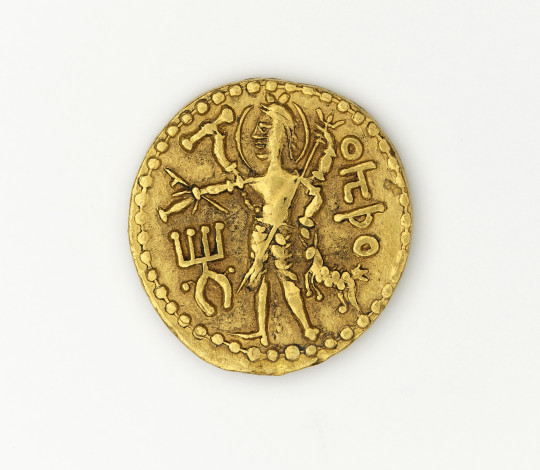
Gold coin from the reign of emperor Huvishka, Kushan Empire, 106-138 AD
from The LA County Museum of Art
184 notes
·
View notes
Text
Intellectually I understand where people are coming from, but personally I do THE biggest double take every time someone boils down conservative Christian ideology (and/or secularized cultural reflections thereof) to a kind of dour puritanism that proclaims happiness is sin/suffering is a moral good/everyone should be miserable all the time. Like I get it! I do. But also, institutionally, I have never met a group of more passionate worshippers and vicious defenders of their own comfort than evangelical Christians. There is a reason the common thread between my various weird triggers more or less boils down to "toxic positivity." There is a REASON my exvangelical tag is #walking away from omelas.
#one of my biggest problems with half-cooked critiques of christianity tbqh#and fundamentally it's just the flip side of the same coin#to liberal christians going 'well republicans aren't REAL christians bc they flout the teachings of their own holy text'#religions are socially as well as ideologically constructed! 'real' christianity is christianity as it is really practiced!#valid critique WITHIN the faith perhaps but not that meaningful (and in fact kind of willfully dense imo) take on christianity as a whole.#likewise trying to pin the evils of institutional christianity on some fatal underlying theological flaw is getting the issue backwards#in much the same way that treating race as a biological reality as opposed to a social construct is getting things backwards#empires do not rob and murder and enslave because they are racist.#they do those things out of naked self interest and invent racism to justify themselves and prop up their power.#walking away from omelas#my posts
208 notes
·
View notes
Text

checkmatch moodboard
#amity does shit#ghostbusters#ghostbusters frozen empire#frozen empire spoilers#phoebe spengler x melody ghostbusters#melody ghostbusters#phoebe spengler#meloebe#phelody#checkmatch#LISTEN i coined checkmatch I'll use it even if no one else does
120 notes
·
View notes
Text
Probblo - problematic blorbo. You're fully aware that the character you're attached to is not a good role model, perhaps even a terrible person, but you're not going to add that caveat to every post you make about them because you assume your readers are intelligent people who already know that.
#i am coining this because EVERY roman i'm attached to is a probblo. as well as the roman republic/empire itself#this isn't in response to anybody i just want to express 'my feelings about this guy are complicated' succinctly#probblo#jlrrt speaks#fandom terms
100 notes
·
View notes
Text

The Fomori/Coin Empire and Oltec designs learned from the Fomori ships.
#mtg#magic the gathering#fomori#coin empire#giants#golems#gnomes#technology#invasion#fantasy card game#wotc#wizards of the coast
6 notes
·
View notes
Photo
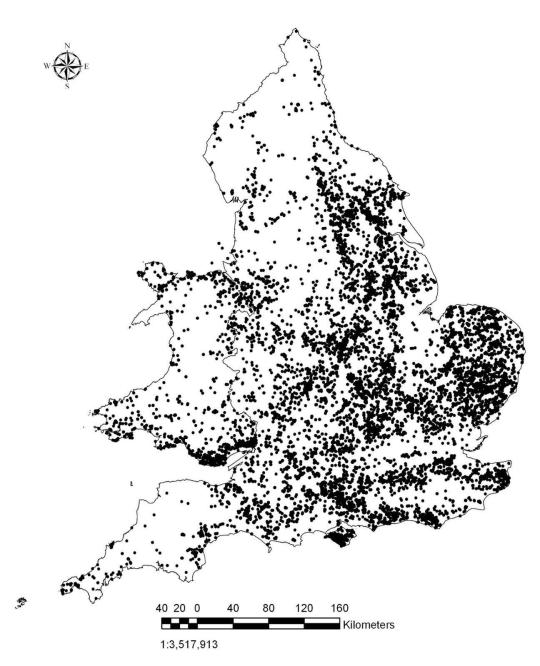
Where Roman coins have been found in Britain
210 notes
·
View notes
Text
Coins of the Deified Augustus, 14-268 CE
The most fascinating thing about these types is how Augustus's portrait changes with the engraving style of the period as his portrait is sort of fused with that of the current emperor.

Divus Augustus Dupondius, struck under Tiberius.
A pretty much unaltered portrait of Augustus, something we won't be seeing often when it comes to these coins. Struck 22-23.

Divus Augustus under Tiberius, laureate head of Tiberius on obverse, laureate head of Augustus on reverse with star above. Struck 14-16.

Divus Augustus under Caligula, struck 37. Bare head of Caligula right on obverse, Radiate head of Augustus right on reverse, two stars to each side of bust.

Divus Augustus, struck in Spain(?) during the civil wars that took place between 68 and 69. Radiate head of Augustus on obverse. Pax standing left and holding a caduceus on reverse.
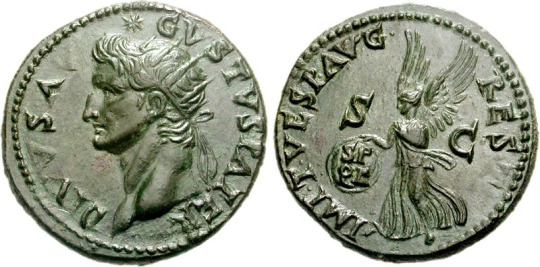
Divus Augustus under Titus (restitution issue that takes the design of that Tiberius Dupondius). Struck 80-81.

Divus Augustus As issued under Nerva (kind of a restitution issue, but not really) Struck 97-98. Eagle perched on thunderbolt on reverse.
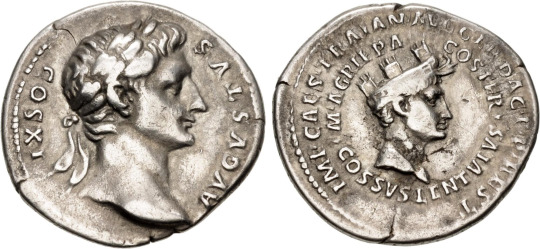
Under Trajan, another restoration issue of one of Augustus's denarii and technically not a Divus issue but I'm still putting here because I like it. Struck 107 or 112-113
Reverse depicts his bestie Agrippa

Cistophoric Tetradrachm struck under Hadrian, 128 (Augustus is literally just a beardless Hadrian here) Reverse depicts Hadrian holding some corn ears.

Skipping forward quite a bit, Divus Augustus Antoninianus issued under Trajan Decius as a part of his "Divus" series of coins. Reverse depicts a lit altar. Struck 249-251.
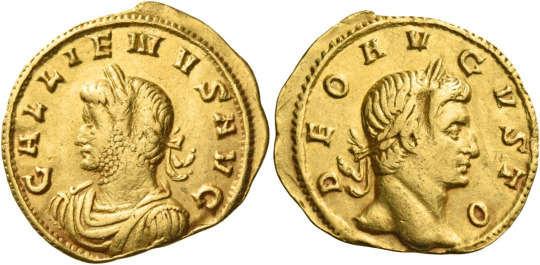
Deo Augusto issue, this one is really interesting as it is *theorized* that this was struck as a way to ask for aid from Augustus the god during Gallienus's disastrous reign. Struck 260-268.
#ancient coins#ancient rome#ancient art#ancient history#roman art#history#roman coin#roman coins#roman empire#roman emperor
78 notes
·
View notes
Text
I think of Joel and Scott like two sides of the same coin. I don't know how to explain it but they are like polar opposites yet soooo similar. I don't know, but I like this idea and I'm running around the world with it and no one can stop me
ʕ •ᴥ•ʔ
#scott smajor#smallishbeans#secret life#life series#limited life#double life#3rd life#empires smp#one life smp#trafficblr#the sillies#two sides of the same coin
95 notes
·
View notes
Text

Stater, minted 380/379 BCE at Tarsus in Cilicia, of Pharnabazus II, former satrap of Hellespontine Phrygia under the Achaemenid dynasty of Persia and a major figure in the internecine conflicts of the Greek city-states during the late 5th/early 4th centuries. The coin shows the complex intermingling of Greek and Near Eastern cultures characteristic of Anatolia under Achaemenid rule. On the obverse, Ba'al of Tarsus is shown seated, holding a lotus-tipped scepter and wearing the Greek chlamys. On the reverse, a bearded man wears a helmet in Attic style. Both sides are inscribed in Aramaic, which served as the lingua franca of the Near East under the Achaemenids. Photo credit: Classical Numismatic Group, Inc. http://www.cngcoins.com
#history#ancient history#classics#tagamemnon#Persian Empire#Achaemenid#coins#ancient coins#Persian coins#numismatics#ancient numismatics#artifacts#artefacts
89 notes
·
View notes
Text

Discovery of Roman Buried Coins in Wales Declared Treasure
Two sets of coins found by metal detectors in Wales are actually Roman treasure, the Welsh Amgueddfa Cymru Museum announced in a news release.
The coins were found in Conwy, a small walled town in North Wales, in December 2018, the museum said. David Moss and Tom Taylor were using metal detectors when they found the first set of coins in a ceramic vessel. This hoard contained 2,733 coins, the museum said, including "silver denarii minted between 32 BC and AD 235," and antoniniani, or silver and copper-alloy coins, made between AD 215 and 270.
The second hoard contained 37 silver coins, minted between 32 BC and AD 221. Those coins were "scattered across a small area in the immediate vicinity of the larger hoard," according to the museum.
"We had only just started metal-detecting when we made these totally unexpected finds," said Moss in the release shared by the museum. "On the day of discovery … it was raining heavily, so I took a look at Tom and made my way across the field towards him to tell him to call it a day on the detecting, when all of a sudden, I accidentally clipped a deep object making a signal. It came as a huge surprise when I dug down and eventually revealed the top of the vessel that held the coins."
The men reported their finds to the Portable Antiquities Scheme in Wales. The coins were excavated and taken to the Amgueddfa Cymru Museum for "micro-excavation and identification" in the museum's conservation lab. Louise Mumford, the senior conservator of archaeology at the museum, said in the news release that the investigation found some of the coins in the large hoard had been "in bags made from extremely thin leather, traces of which remained." Mumford said the "surviving fragments" will "provide information about the type of leather used and how the bags were made" during that time period.
The coins were also scanned by a CT machine at the TWI Technology Center Wales. Ian Nicholson, a consultant engineer at the company, said that they used radiography to look at the coin hoard "without damaging it."

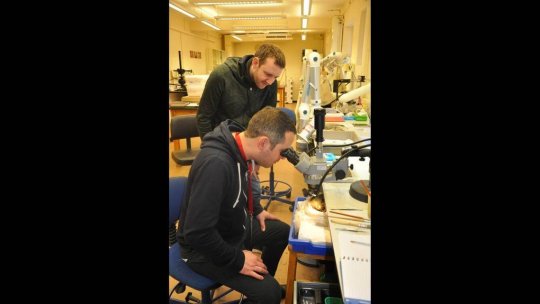
"We found the inspection challenge interesting and valuable when Amgueddfa Cymru — Museum Wales approached us — it was a nice change from inspecting aeroplane parts," Nicholson said. "Using our equipment, we were able to determine that there were coins at various locations in the bag. The coins were so densely packed in the centre of the pot that even our high radiation energies could not penetrate through the entire pot. Nevertheless, we could reveal some of the layout of the coins and confirm it wasn't only the top of the pot where coins had been cached."
The museum soon emptied the pot and found that the coins were mostly in chronological order, with the oldest coins "generally closer to the bottom" of the pot, while the newer coins were "found in the upper layers." The museum was able to estimate that the larger hoard was likely buried in 270 AD.
"The coins in this hoard seem to have been collected over a long period of time. Most appear to have been put in the pot during the reigns of Postumus (AD 260-269) and Victorinus (AD 269-271), but the two bags of silver coins seem to have been collected much earlier during the early decades of the third century AD," said Alastair Willis, the senior curator for Numismatics and the Welsh economy at the museum in the museum's news release.
Both sets of coins were found "close to the remains of a Roman building" that had been excavated in 2013. The building is believed to have been a temple, dating back to the third century, the museum said. The coins may have belonged to a soldier at a nearby fort, the museum suggested.
"The discovery of these hoards supports this suggestion," the museum said. "It is very likely that the hoards were deposited here because of the religious significance of the site, perhaps as votive offerings, or for safe keeping under the protection of the temple's deity.
By Kerry Been.
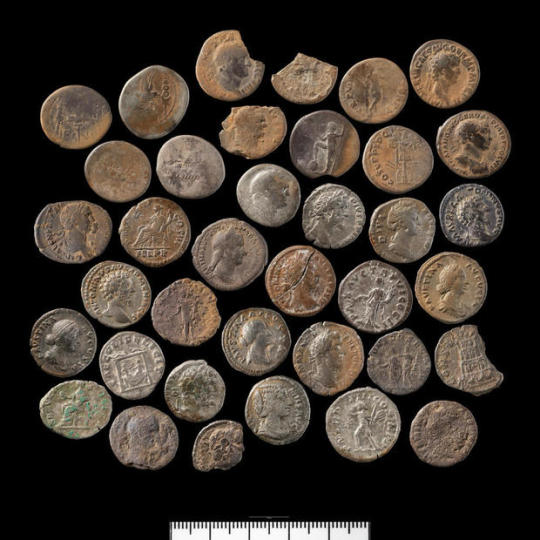
#Discovery of Roman Buried Coins in Wales Declared Treasure#coins#collectable coins#roman coins#metal detecting#ancient artifacts#archeology#archeolgst#history#history news#ancient history#ancient culture#ancient civilizations#roman history#roman empire#roman art
166 notes
·
View notes